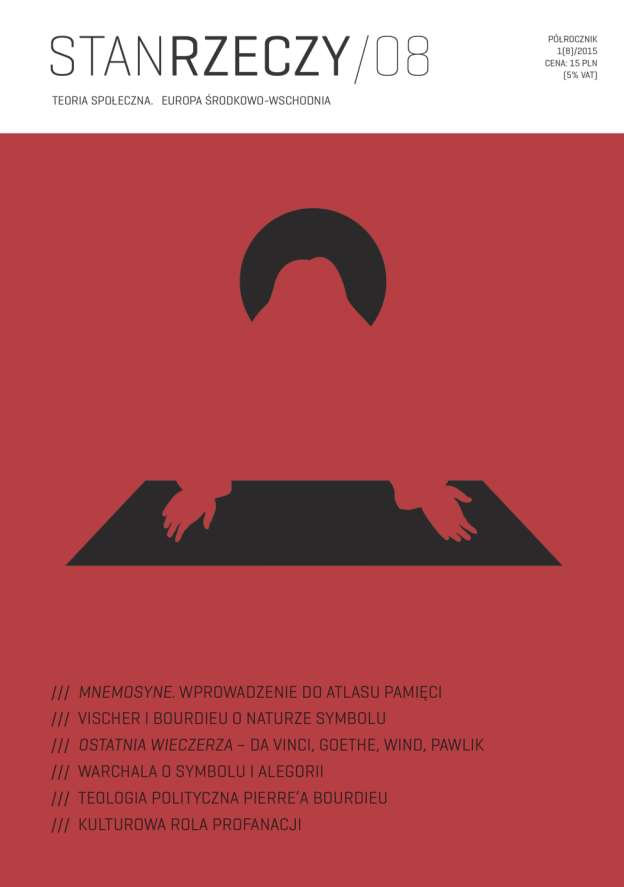
We kindly inform you that, as long as the subject affiliation of our 300.000+ articles is in progress, you might get unsufficient or no results on your third level or second level search. In this case, please broaden your search criteria.

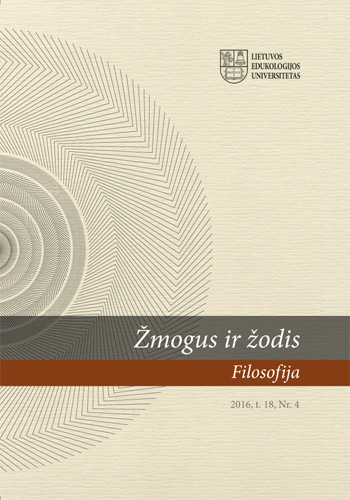
This article explores and contrasts Deleuze’s thought and speculative realism (SR). Focusing on their respective approaches to art, it aims to show that the Deleuzian perspective can be regarded as a critique of SR’s treatment of art. It starts by demonstrating that a particular strand of SR known as object-oriented ontology (OOO) is unable to account for contemporary art as we know it. It then contrasts the approach of OOO with Deleuze’s thought, which endorses art and demonstrates an understanding of the nonhuman that can help to resolve some of the problems encountered by OOO. Having explored the differences between Deleuze’s thought and SR with respect to art, the article goes on to examine their similarities. It shows that both Deleuze and a rationalist offshoot of SR take an analogous approach to the relation between philosophy, art and science. Here, not only Deleuze and SR, but also SR and art, find common ground.
More...
The aim of the article is to briefly discuss the relevance of Bourdieu’s sociology of art to cultural studies of the Soviet period which have been getting increased attention from the researchers who focus on literary field practices. It summarizes the concepts that define the functions of literary field and their usage, and formulates questions that arise in the field of Soviet period using the chosen methodology. It also presents an overview of the critical reception of Bourdieu’s work abroad and the application of his theory in Lithuania. The article proposes to look at the field of Soviet Lithuanian literature as a specific heteronomic variation, where the power of literary legitimation is in the hands of people who dominate the political field, and where field’s anatomy is limited by censorship. The members of such literary field had to play a double game. On the one hand, seeking symbolic capital they had to follow the rules of autonomous literature (“art for art’s sake”). On the other hand, wishing to participate in the “official game” the members had to respect politically determined directives of Social Realism (the early Soviet period defined by the notion of “apparatus” could be one of the radical examples of the game). In other words, a writer seeking after the “prizes” offered by the field was forced to look for strategies allowing him or her to function in it. If that strategy even partially opposed the rules of the political game (writing in Aesopic language or arguing with the government’s decisions), a writer risked being eliminated from the field. However, the risk taken could be hardly measured, as the success was determined by multiple and sometimes random factors.
More...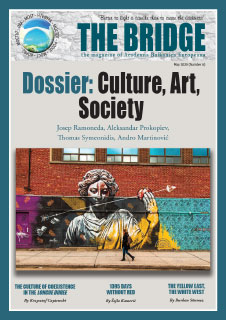
« THE BRIDGE » is offered in PDF format comprising always the full issue as one file, not devided into individual articles. Please take a look into the TABLE of CONTENT and into the EDITORIAL for authors and texts of your interest.
More...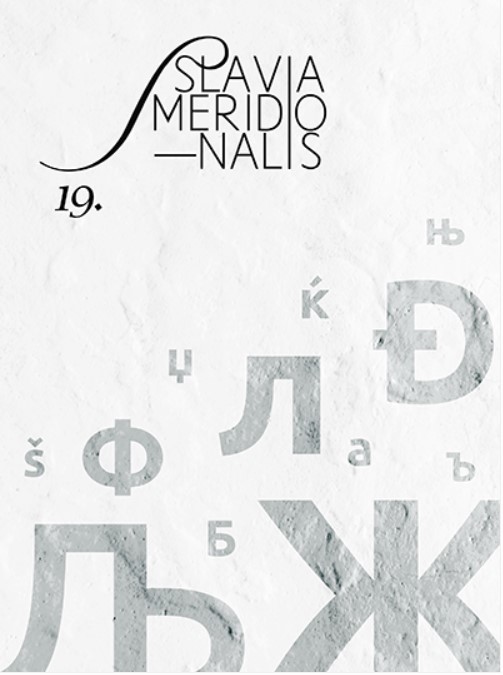
I follow the performance of resistance in performance art in Croatia from the 1990s – i.e. from the disintegration of Yugoslavia – in correlation with the visibility of the performance of resistance in public spaces, with an emphasis on the individual guerrilla action by Igor Grubić (1998), which is considered the first action and provocation in Croatia of the 1990s that was triggered by civic self-initiative. Due to socialist legacy and the war, it was only in 1998 that an action could occur in Croatia that would be as powerful action in terms of media influence as had been the case in the revolutionary year of 1968 in Yugoslavia with the action Red Peristyle, upon the aura of which Grubić’s Black Peristyle was built. I conclude this review of the performance of resistance in Croatia from the 1990s onwards with the story of Black Nylon Peristyle as the civic performative reaction on the occasion of the accession of Croatia to the EU.
More...
This paper reflects on two case studies of monuments in Socialist Yugoslavia in Kosovo, commemorating World War II partisans in Mitrovica (1973) and Landovica (1963) and their performative functions as a part of the phenomena of patriotic tourism. Both examples refer to inter-ethnic (Serbian and Albanian) relations bound by the slogan brotherhood and unity. Boro and Ramiz, two figures present in Yugoslav collective memory and represented through monuments and orality, have become a symbol of unity in Socialist Yugoslavia. War memorials and monuments have been raised all over the territory of socialist Yugoslavia and created an invisible network of remembrance and identity. The most important sites, as those analyzed in this paper, have become destinations of patriotic tourism: they were visited by millions every year and were associated with huge print runs of tourist propaganda production such as maps, guide-books and postcards (apart from commercial tourist attractions, almost every postcard produced in socialist Yugoslavia presented a nearby monument or memorial).
More...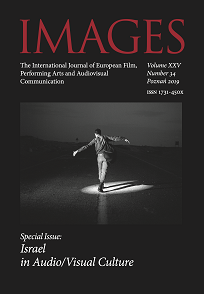
The public discourse in Israel regarding events such as the Holocaust, war, or terror attacks mostly failed to embrace the trauma caused by such events, and to integrate their effects in the collective memory. According to trauma theoreticians, the location of trauma in the discourse is related to the character of trauma as a non-narratable memory, since personal trauma exist in the void, thus marking a missing memory. This paper explores the notion of trauma in contemporary Israeli cinema as it was reconstructed during and after the Second Intifada (2000–2008). The paper focuses on feature films reflecting on experiences of terrorist violence, among them Avanim (2004), Distortion (2004), Frozen Days (2006), The Bubble (2006), 7 Minutes in Heaven (2009). These films embrace parallel elements structuring a worldview, in the private as well as the collective sphere, thus shaping the surroundings as a mirror of the self and the subjective traumatic experience as a reflection of a complex social reality.A particular focus of our analysis will also be on aesthetic strategies that cinematically express rupture and distortion of terrorist violence and trauma, especially moments of suddenness and disruption in contrast to duration and circular repetition, elements of a specific temporality of trauma that also shaped the narration and style of recent Israeli war films, such as Waltz with Bashir (2008) or Beaufort (2007).
More...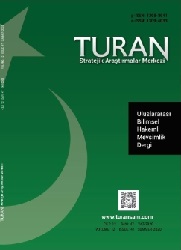
Performing Arts Medicine is one of the subdivisions of occupational diseases. Performing Arts professionals and students are also open to occupational diseases like other professions. The reasons why they are open to injuries are; musicians and dancers repeat too much to learn; they sometimes ignore preventional behaviours and feel excessive stress due to performance. Piano students also get injured like any other instrument players. This article is about some supportive techniques which could be inserted into piano education. Besides physical awareness techniques like Alexander Technique and Feldenkrais Method, teaching some basics of Taubman technique would also help creating a more flowing piano technique and prevent playing related injuries.
More...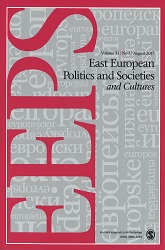
Robert Gliński’s post-communist film Cześć Tereska generated extensive controversy as a story of Polish teenagers disconnected from traditional morality in an anonymous apartment block. Its central character of a young girl, Tereska, makes the film appear to be about femininity and danger in 1990s neoliberal Poland. In an alternative interpretation using the approach that neoliberalism is a form of governmentality, an analysis of male characters surrounding Tereska demonstrates that the film can also be interpreted as a depiction of the inability of individuals to achieve neoliberal ideals of masculinity. The 1990s’ dominant ideology of individualism and freedom created expectations that men would embody a self-contained, self-restrained potency that functioned to curb the excesses of the society around them. We argue that the impossibility of achieving this embodiment generates tensions in the film that are only resolved at times when Tereska is made to take on the responsibility for managing men’s desires. While several scholars have pointed to a “crisis of masculinity” in Eastern Europe, we find that Cześć Tereska can be seen as a narrative that delineates the specific effects of anxious masculinities on female-gendered agency and autonomy, but that is limited in its ability to fully work out those implications.
More...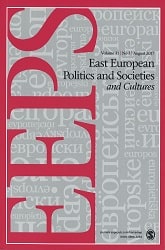
In 1948, immediately after the Communist Party came to power in Romania, state officials commissioned a group of art experts to radically transform the existing public and private art collections into a national system of museums. These professionals became the new regime’s arbiters of value: the ultimate authority in assessing the cultural and financial value of artwork, and thus deciding their fate and final location. Newly available archival evidence reveals the specific strategies that they employed, and the particular political needs of the state they were able to capitalize on in order to survive and even thrive under a regime that, in principle, should have disavowed them. Even though many of them had professionally come of age during the interwar period, the art experts managed to make themselves indispensable to the new state. They functioned as a pivotal mediator between state officials and a broader public because they knew how to use the national network of museums to put the new state on display. Through the rearrangement of public and private collections across the country, and the centralization of art in museums, they produced a particular “order of things” meant not only to entice the public to view the socialist state as the pinnacle of progress and as a benefactor to the masses but also to validate their expertise and forge a new political trajectory for themselves. The strategic movement of art objects that they orchestrated reveals the material and spatial dimensions of state-making in early socialism.
More...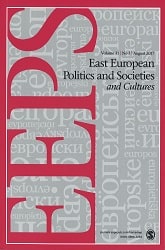
In the past few decades, Poland has seen a growing number of attempts to reclaim its Jewish past through traditional forms such as historiographic revision, heritage preservation, and monument building. But a unique new mode of artistic, performative, often participatory “memory work” has been emerging alongside these conventional forms, growing in its prevalence and increasingly catching the public eye. This new genre of memorial intervention is characterized by its fast-moving, youthful, innovative forms and nontraditional venues and its socially appealing, dialogic, and digitally networked character as opposed to a prior generation of top-down, slow moving, ethnically segregated, mono-vocal styles. It also responds to the harsh historical realities brought to light by scholars of the Jewish-Polish past with a mandate for healing. This article maps the landscape of this new genre of commemoration projects, identifying their core features and investigating their anatomy via three case studies: Rafał Betlejewski’s I Miss You Jew!; Public Movement’s Spring in Warsaw; and Yael Bartana’s Jewish Renaissance Movement in Poland. Analyzing their temporalities, scopes, modalities and ambiences, as well as the new visions for mutual identification and affiliation that they offer Poles and Jews, we approach these performances not as representations, but rather as embodied experiences that stage and invite participation in “repertoires” of cultural memory. Different from simple reenactments, this new approach may be thought of as a subjunctive politics of history—a “what if” proposition that plays with reimagining and recombining a range of Jewish and Polish memories, present-day realities, and future aspirations.
More...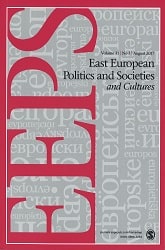
In the turbulent context of interwar Polish politics, a period bookended by the rightwing nationalists’ repression of an ethnically heterogeneous state, several popular highquality cabarets persisted in Warsaw even as they provoked and defied the nationalists’ harsh criticism. In their best, most influential incarnation, Qui pro Quo (1919–1932) and its successors, these literary cabarets violated the right’s value system through their shows’ insistent metropolitan focus, their stars’ role-modeling of immoral behavior and parodic impersonation, and their companies’ explicitly Jewish–Gentile collaboration. In the community of the cabaret, which was even more bohemian and déclassé than that of the legitimate theater, the social and ethnic antagonisms of everyday Warsaw society mattered relatively little. Writers and players bonded with each other, above all, in furious pursuit of fun, fortune, celebrity, artistic kudos, and putting on a hit show. This analysis details how the contents and stars of Qui pro Quo challenged right-wing values. Its shows advertised the capital as a sumptuous metropolis as well as a home to an eccentric array of plebeian and underworld types, including variations on the cwaniak warszawski enacted by comedian Adolf Dymsza. Its chief female stars—Zula Pogorzelska, Mira Zimińska, and Hanna Ordonówna—incarnated big-city glamour and sexual emancipation. Its recurring Jewish characters—Józef Urstein’s Pikuś and Kazimierz Krukowski’s Lopek—functioned as modern-day Warsaw’s everymen, beleaguered and bedazzled as they assimilated to city life. Qui pro Quo’s popular defense against an exclusionary nationalism showcased collaborative artistry and diverse, charismatic stars.
More...
In socialist Romania of the mid-1980s, workers’ clubs, theaters, student centers, opera houses, and even philharmonics used the new medium of the videocassette to organize film-viewing venues exhibiting pirated cinematic material. They were called videotheques and sold tens of thousands of admission tickets to an audience hungry for Western commercial films. This article studies the development of this quasi-legal and hybrid economic experiment. It describes its operation, analyzes its spectatorship, the alternative public spheres and patterns of resistance it produced, and the reaction of the Communist authorities, revealing the politically subversive dimension of entertainment consumption in socialist economies.
More...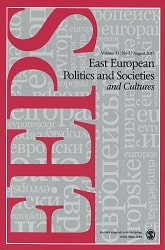
This article uses the medium of film to analyze masculinities at the intersection of the regionally specific with the typical: the peripheral factory town with the universalizing panelák, or apartment block. This article addresses how the private spaces in industrial regions achieve new meaning when the role of the factory or public space, idealized in communist propaganda, has undergone a dramatic transformation. After the narratives that made spaces “great” became irrelevant in 1989 and the paneláky and factories lost their metaphorical meanings, they became simply apartment buildings and privately owned worksites. Within these spaces, many working-class men in industrial regions have faced more difficult transitions than women because they, as idealized workers under socialism, were more invested in the system and lost more from its collapse. Through an analysis of common themes in films released roughly fifteen years after the Velvet Revolution, the author asks how these men relate to the panelák, or private space, when excluded from the masculine, public space of the factory. How does the employment situation impact the family unit? What solutions do directors present to these men who find themselves ill-equipped for life in the industrial periphery after the post-1989 transition? This article draws from and contributes to recent work in the field of Czech gender studies and functions as a Czech case study on the relationship between gender and space in the former Eastern Bloc.
More...
Beginning approximately a decade after the fall of the Berlin Wall, a cultural wave of various artistic representations of the socialist housing projects (blokowisko in Polish) arose in Poland. Three such works, Krzysztof Bizio’s short story collection Zresztą latem wszystkie kwiaty są takie piękne [Besides, in Summer All Flowers are Beautiful] (2003), Robert Gliński’s feature film Cześć, Tereska [Hi, Tereska] (2001), and Sylwester Latkowski’s documentary Blokersi (2001), well illustrate this new cultural trend. A common feature of these works is the complete absence of cultural or national landmarks; the life of the protagonists revolves around the housing projects and the non-places of supermodernity. The atmosphere in the stories ranges from gloom to darkness and their endings are usually unresolved or tragic. However, despite the despair and even fatalism surrounding especially the young female characters, all of the protagonists manage to find spaces of refuge, where they can unlock their imagination. Drawing on Marc Auge’s study of the non-places of supermodernity and Michel Foucault’s concept of heterotopia, while comparing the works to the contemporaneous Swedish film Lilya 4-Ever (2001), this article emphasizes the transnational character of the blokowisko and its universal meaning as a non-place.
More...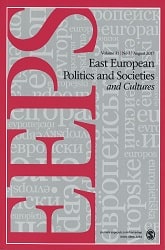
Comedy provided the Bulgarian-born East German film director Slatan Dudow with an approach to realism that was distinct from, and ran counter to, simplistic versions of socialist realism of the time and was central to his unorthodox, practical understanding of socialist political aesthetics. It is this thinking that I propose to reconstruct in this article, discussing its emergence in the montage technique of Dudow’s first film, Kuhle Wampe (1931/1932), its development in published and unpublished writings in terms of what he called the “social comedy of character” (soziale Charakterkomödie), and its enactment in his final, unfinished film, Christine (1963/1974).
More...
The sundial is the oldest device for measuring time. It has been used in Transylvania since the Middle Ages to this day. After showing how we can determine if a sundial is working correctly or not, the article makes an overview of the Transylvanian sundials: how many are they, of what kinds they are, where we can find them and why there, as well as how exactly do they work.
More...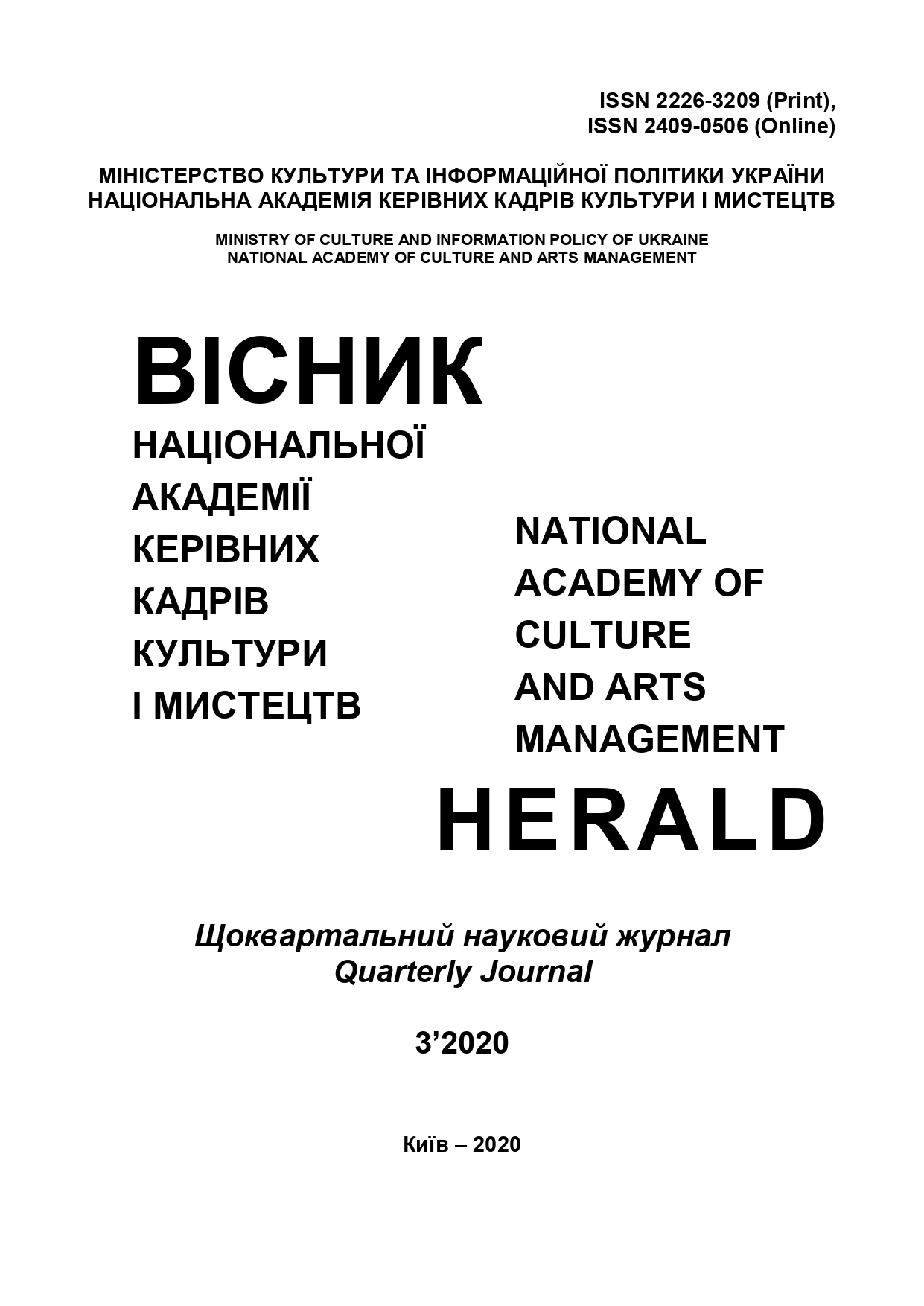
The purpose of the article is to identify typological and functional features of etudes in various forms of artistic and intellectual activity and their intersection with the poetics of piano etudes. The methodology is based on the following approaches: analytical, musicological, genre-style, etymological, interdisciplinary, historical-cultural, allowing to identify factors that contribute to the identification of spiritual, semantic, and stylistic specifics of etudes in various types of art and intellectual creativity, as well as an important component of European piano music of the XIX-XX centuries. The scientific novelty of the article is determined by its analytical perspective, taking into account the typological characteristics of this genre and its analogs both in musical art and in other types of artistic and intellectual activities. Conclusions. The study of the etymological and semantic indicators of the word «etude» allows us to identify its general content in various types of creative and intellectual activities of a person, its «prolitical meaning», which is determined at the level of educational, research support work, oriented ultimately to gain Mastery. In various areas of creative activity (painting, theater, chess, sociology, etc.), the study performs the role of «push-action» in understanding the nature, theme, genre, role, social issues, works and is associated not only with «entry» - the development of certain typological models and artistic principles of their functioning but also with the means of their "technical interpretation". The typology of a musical etude demonstrates the ability to enter and implement other genre typologies (instrumental, vocal) and related means of expression. The indicated qualities of the etude are generalized at the level of understanding of it as a universal «conceptual-avant-garde» genre that is potentially open to any type of content and outlines the milestones in the development of European instrumentalism and piano performance of the 19th-20th centuries.
More...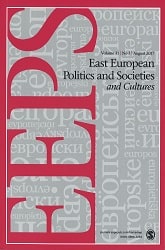
The article examines Krzysztof Kieslowski’s Blind Chance (Przypadek, 1981) as a film with a distinct philosophical significance. According to the interpretation proposed, in Blind Chance Kieslowski touches on both universal philosophical topics (death, meaninglessness, quest for certainty and truth, deciphering silence) and “local” themes (East-European historical pessimism, geography as destiny, “terror of history”). In spite of Kieslowski’s self-declared religious agnosticism, Blind Chance could be—thanks even to the aesthetics of the film—read as a paradoxical theological statement, not so much about God per se, as about the necessity of his existence. In the same vein, the film occasions a series of meditations on historical fate and the role of geography in history, about hope and hopelessness, existential exhaustion, and legacies of silence.
More...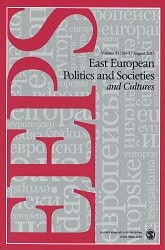
In May 2001, Yad Vashem’s removal of portions of a recently unearthed mural painted during World War II by creative artist Bruno Schulz was enormously controversial, not only because of the questionable circumstances in which they were taken, but also because several parties had a legitimate claim to them. This article examines the dispute over the Schulz murals, illustrating how competing narratives of national identity—Polish, Jewish, and Ukranian—have infused the debate with particular intensity. Claims to the murals have been advanced largely on the basis of moral rights, which are grounded—explicitly or implicitly—in each nation’s experience of collective suffering and victimhood. While not an exhaustive discussion of all the national dimensions of the debate, it is a starting point for understanding how the interplay of national identities shapes political claims in general, and underpins specifically the debate over the Schulz murals.
More...